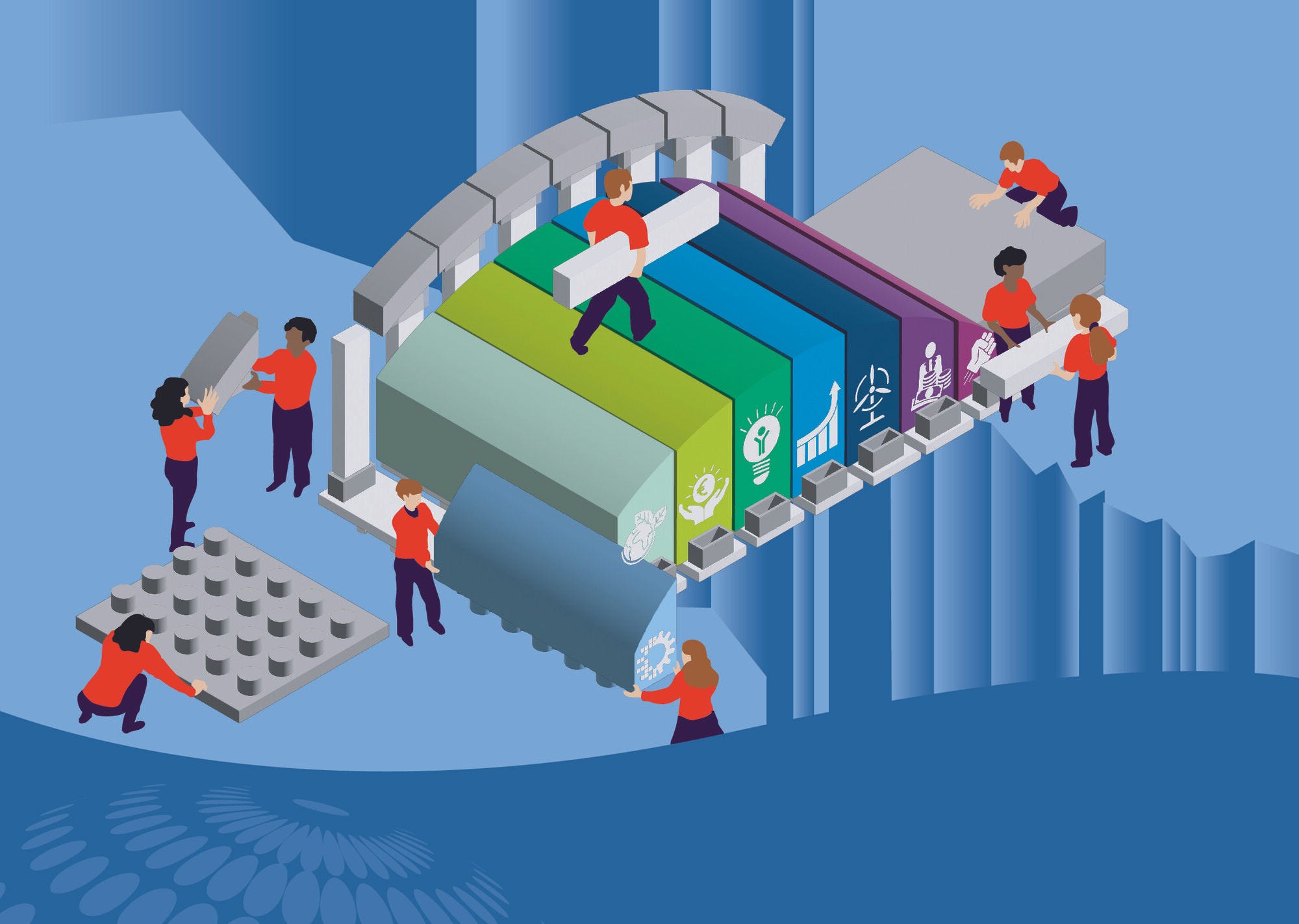Financing SMEs and Entrepreneurs 2022: An OECD Scoreboard provides information on SME financing trends and policies for 48 countries around the world for the period 2007 through the first half of 2021. The Scoreboard includes indicators on debt, equity, asset-based finance and framework conditions for SME and entrepreneurship finance, complemented by demand-side information and recent developments in public and private initiatives to support SME finance. Taken together, these indicators form a comprehensive framework for policy makers and other stakeholders to evaluate the financing needs of SMEs. The Scoreboard also constitutes a valuable tool to support the design and evaluation of policy measures, and to monitor the implications of financial reforms on access to finance and financing conditions for SMEs over time.
The 2022 edition of the Scoreboard provides evidence of unprecedented developments in SME and entrepreneurship finance. The COVID-19 pandemic delivered a significant economic shock in 2020, with a global GDP contraction of 3.4% and a decline in global trade of 8.5% in real terms (OECD, 2021[1]). SMEs and entrepreneurs were at the centre of the crisis impact. Prolonged business shutdowns, depressed demand, and value chain disruptions created considerable operational and financial pressures on SMEs, threatening the survival of many viable enterprises and entrepreneurs (OECD, 2021[2]) . While the global economy rebounded in 2021, growing by 5.6%, the recovery remains uneven and risks of renewed outbreaks and related shutdowns persist (OECD, 2021[1]). Furthermore, SMEs are facing additional challenges related to the war in Ukraine. Inflation, in particular in the price of energy and raw materials, volatility in financial markets and disruptions in supply chains and trade, are having negative impacts on SME operations and performance, jeopardising their recovery. The medium- and long-term impacts on SME finance remain to be seen.
As the COVID-19 crisis unfolded, the significant policy response ensured that financing continue to flow to the economy, including to liquidity-strapped SMEs and entrepreneurs. Credit conditions relaxed in response to large-scale fiscal and monetary stimulus: in 2020 interest rates registered record lows in a large number of countries, interest rate spreads narrowed considerably in most Scoreboard countries, and collateral requirements declined across the board. In this context, new lending increased in about half of the Scoreboard countries, further supported by credit guarantee schemes and a notable rise in direct lending by public institutions. But even in economies where the growth of new loans was subdued or negative, complementary measures such as payment deferrals and debt moratoria provided relief for SME liquidity pressures. The combination of these measures also accounted for the sharp increase in the stock of outstanding SME loans, which grew at a rate never before registered in the history of the Scoreboard (4.9% in 2020 compared to an average annual increase of 1.2% in the previous five years).
In most economies, the majority of support measures was broad-based and accessible to all SMEs. This enabled most enterprises to continue to operate; as a result, bankruptcies declined in the majority of Scoreboard countries in 2020, with the median bankruptcy rate down by 11.7%. Nonetheless, in some countries, particularly those in the European Union, efforts were made to target lending and grant support measures to SMEs that were not in financial distress prior to the crisis, which appears to have minimised the distortive effects in these countries.
Alternative sources of finance, whose uptake by SMEs had been growing significantly prior to the crisis, declined significantly in 2020. For example, the drop in both leasing and hire purchases and factoring was unprecedented. The decline in leasing represented a reversal of the pre-crisis positive trend, while the drop in factoring intensified the pre-crisis slowdown of this activity.
Evidence on equity finance shows a fairly resilient venture capital sector despite the COVID-19 pandemic. Half of the countries that provided data for this indicator registered positive growth in 2020, in particular those with an already large market share, and this trend continued in 2021.
Online alternative finance activities have also continued to rise rapidly in most economies, spurred in part by new opportunities opened up by the crisis.
Chapter 2 of the report assesses SME financing support in national recovery packages that aim to accelerate growth and foster structural transformation in the aftermath of the pandemic. Comparisons are made with rescue measures implemented to stave off the economic and social impacts of the COVID-19 pandemic. The analysis shows only a modest focus on SMEs in recovery packages, with SME-related polices representing just 4.1% of total policy measures, and SME-specific funding just 2.2% of total funding (compared to 17% and 25.5% respectively in rescue packages).
The significant decline in liquidity support in the recovery phase is particularly notable. Measures aimed at boosting SME liquidity through debt, grants and deferral instruments carry less weight in recovery packages (4.5% of the total volume of finance) than in crisis measures (43.2%), and are increasingly targeted to viable firms and underserved companies owned by vulnerable groups. Recovery packages also have a stronger focus on start-ups, with policies in this area accounting for nearly a quarter of all SME-related policies (compared to 2% in rescue packages).
In terms of policy focus, recovery packages place emphasis on innovation, digitalisation and greening, with innovation accounting for the highest number of SME-related policies and digitalisation for the highest volumes of financial support. On the other hand, explicit SME-related policies related to greening and sustainability represent only 2.44% of financial support in this area according to the analysis of policy trackers, although figures for Europe are higher (approximately 5%). This evidence highlights the need for additional measures to ensure that SMEs are equipped to finance actions to reduce their carbon footprint and contribute to sustainability objectives. The new OECD Platform on Financing SMEs for Sustainability will advance these objectives by providing a forum for knowledge-sharing and policy dialogue on sustainable finance for SMEs.
Given their continued focus on traditional finance, recovery packages are not likely to be a key mechanism to kick-start improvements in the uptake of alternative sources of finance for SMEs. Going forward, governments may wish to consider other mechanisms to foster diversification of SME finance instruments, in line with the G20/OECD High-Level Principles on SME Financing. Fintech may hold particular promise to help SMEs thrive in the post-pandemic recovery, which is likely to be characterised by continued high levels of SME debt and challenges in risk assessment for certain firms and sectors.
There may also be a need to take additional steps to address the challenges of SME insolvency, which are only modestly covered in recovery packages through measures such as debt restructuring solutions and actions to strengthen the capacities of insolvency systems.












